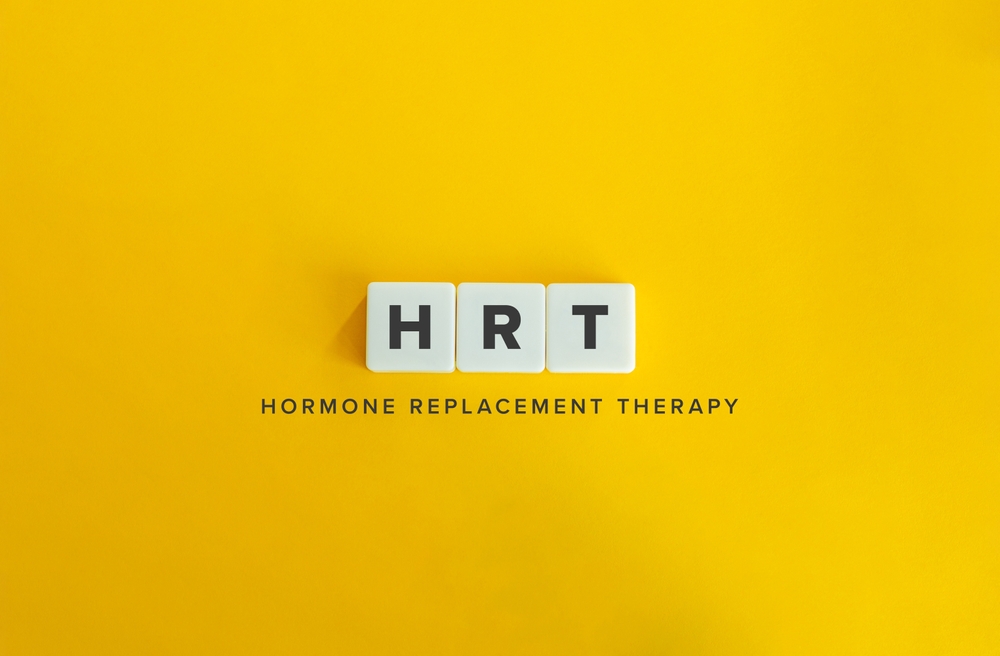Just when you think you’re finished with the hormone discomforts and premenstrual symptoms, menopause comes through. And unfortunately, with menopause comes another wave of hormone discomforts. Fortunately, with the help of Core Functional Medicine and hormone replacement therapy, women can find relief. Here is your beginner’s guide to hormone replacement therapy.
Hormones Rule Our Lives
Both men and women have hormones that change over their lifetimes. Any imbalance can drastically affect your day-to-day life.
Estradiol and progesterone are essential for maintaining bone density and preventing osteoporosis. Estradiol helps prevent bone loss through suppressing the effects of osteoclasts (cells that break down bone), maintain collagen and other structural bone proteins, improves calcium absorption, and helps bones utilize vitamin d more efficiently. Progesterone helps by actively promoting new bone formation by stimulating osteoblasts (bone-building cells), regulating bone turnover, and preventing estrogen dominance.
Estradiol and progesterone work together to support heart and metabolic health by balancing vascular function, cholesterol levels, blood sugar, and inflammation. Estradiol improves cardiovascular health by promoting vasodilation (via nitric oxide), reducing inflammation, and increasing HDL (good cholesterol) while lowering LDL (bad cholesterol) and triglycerides. It also enhances insulin sensitivity and glucose metabolism, reducing the risk of type 2 diabetes and metabolic syndrome. Progesterone complements estradiol by supporting blood vessel relaxation, reducing blood pressure, and preventing estrogen-induced blood clot risks. It also regulates blood sugar by improving insulin efficiency and reducing cortisol-driven weight gain. Together, they prevent cardiovascular disease, regulate fat distribution, and maintain a healthy metabolism. Their decline in menopause increases the risk of heart disease, insulin resistance, and weight gain, making hormone therapy a potential strategy for long-term metabolic and cardiovascular health.
Estradiol and progesterone work together to support cognitive function, mood stability, and neuroprotection. Estradiol enhances brain function by boosting neurotransmitters like acetylcholine, serotonin, and dopamine, which improve memory, focus, and mood. It also increases neuroplasticity, promotes synaptic connections, and improves blood flow to the brain, reducing the risk of cognitive decline.
Progesterone complements estradiol by activating GABA receptors, which promotes calmness, reduces anxiety, and improves sleep quality—all essential for brain function. It also supports myelin formation, which protects nerve cells and speeds up communication between neurons. Both hormones have anti-inflammatory and antioxidant properties, helping to protect against neurodegenerative diseases like Alzheimer’s. Their decline in perimenopause and menopause contributes to brain fog, memory issues, mood swings, and poor sleep. Maintaining balanced levels through hormone therapy may help preserve cognitive function, emotional stability, and overall brain health as women age.
Estradiol and progesterone work together to maintain libido, vaginal health, and overall sexual function. Estradiol enhances blood flow to the genital area, increases natural lubrication, and maintains vaginal tissue elasticity, preventing dryness and discomfort. It also supports dopamine and serotonin levels, which contribute to desire, arousal, and sexual satisfaction. Progesterone complements estradiol by modulating mood, reducing anxiety, and promoting relaxation, which can improve sexual responsiveness. It also balances estrogen’s effects, preventing overstimulation that may cause mood swings or irritability. When both hormones decline in perimenopause and menopause, women often experience lower libido, vaginal dryness, and discomfort.
If our hormones are imbalanced by being too low or too high, you can see how your life can be disrupted.
For menopause in particular, there is a reduction in the hormones estrogen and progesterone. The discomforts of hormone imbalance affects approximately 85% of women during menopause. It is sometimes referred to as a change of life.
The good news is you don’t have to suffer through. There is help.
Typical Menopause Complaints
During menopause women often experience night sweats and hot flashes.
Other symptoms include the following:
- Trouble sleeping
- Being irritated at nothing serious
- Feeling not in control of your emotions
- Fatigue
- Memory problems
- Lack of focus
- Joint, muscle, and body aches
- Sexual issues
You may not experience all of these menopause issues, but expect some. Some may be worse than others.
Balancing Your Hormones
The trick is to restore the balance of these missing or reduced hormones. We can work with you to develop different combinations for hormone replacement therapy.
Contact Core Functional Medicine if you are experiencing any of the signs of menopause and would like to discuss hormone replacement therapy in Texas. Give us a call at 737-271-1804 today to get started, or request an appointment through our secure online form.
Sources:
Kundakovic M, Rocks D. Sex hormone fluctuation and increased female risk for depression and anxiety disorders: From clinical evidence to molecular mechanisms. Front Neuroendocrinol. 2022 Jul;66:101010. doi: 10.1016/j.yfrne.2022.101010. Epub 2022 Jun 15. PMID: 35716803; PMCID: PMC9715398.
Endocrine Society. (2022, January 24). Reproductive hormones. https://www.endocrine.org/patient-engagement/endocrine-library/hormones-and-endocrine-function/reproductive-hormones
Prior, J. C. (2020). Women’s reproductive system as balanced estradiol and progesterone actions—a revolutionary, paradigm-shifting concept in women’s health. Drug Discovery Today: Disease Models, 32, 31–40. https://doi.org/10.1016/j.ddmod.2020.11.005
Del Río, J. P., Alliende, M. I., Molina, N., Serrano, F. G., Molina, S., & Vigil, P. (2018). Steroid hormones and their action in women’s brains: The importance of hormonal balance. Frontiers in Public Health, 6. https://doi.org/10.3389/fpubh.2018.00141
Mu, E., Chiu, L., & Kulkarni, J. (2025). Using estrogen and progesterone to treat premenstrual dysphoric disorder, postnatal depression and menopausal depression. Frontiers in Pharmacology, 16. https://doi.org/10.3389/fphar.2025.1528544
Baik SH, Baye F, McDonald CJ. Use of menopausal hormone therapy beyond age 65 years and its effects on women’s health outcomes by types, routes, and doses. Menopause. 2024 May 1;31(5):363-371. doi: 10.1097/GME.0000000000002335. Epub 2024 Mar 9. PMID: 38595196; PMCID: PMC11465799.
WebMD. (n.d.). Menopause and HRT: Hormone replacement therapy types and side effects. WebMD. https://www.webmd.com/menopause/menopause-hormone-therapy





